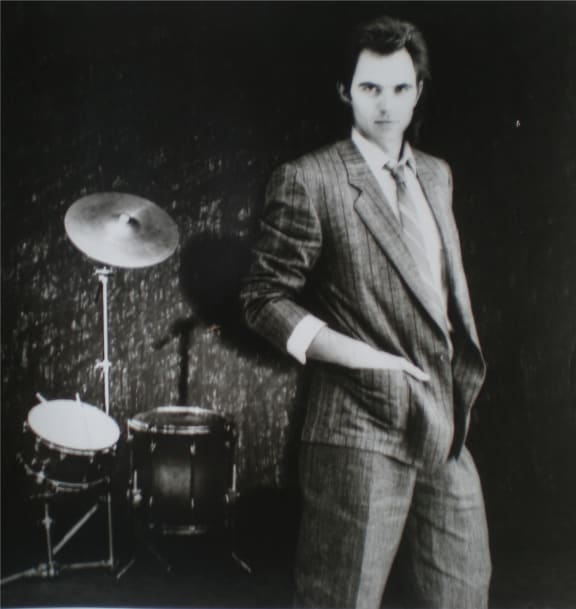
Richard James Burgess Photo: courtesy Richard James Burgess
Former Quincy Conserve drummer Richard Burgess helped define the 'new romantic' sound, ran drum clinics, lectured in the US and UK and produced 24 charted singles and 14 hit albums.
He wrote the definitive textbook 'The Art of Music Production', and now works at the Smithsonian Institute archiving and preserving the world's music.
Richard James Burgess talks about his life in music with Keith Newman. (Part 1 of 2)
Listen to Part Two of Musical Chairs featuring Richard James Burgess.
The Kiwi who named 'new romantic' music
Former Quincy Conserve drummer Richard James Burgess has the dubious honour of helping to create the electronic drum sound and coining the term 'new romantic' to describe the post new wave music style that came out of the English club scene at the dawn of the 1980s.
Burgess paid his dues with Kiwi band Quincy Conserve in the mid 1970s; playing on their second album, including Aire of Good Feeling, recently reprised as a commercial for TV2.
In between gigs with Quincy, he was in demand as part of the rhythm section for a number of local recordings, working with Craig Scott, Shane, Suzanne and others on their albums. His plans to further his studies in the broader music industry remained form however and he applied to the prestigious Berklee College of Music in Boston.
By the time he arrived in England in May 1972 a letter had been forwarded that he'd not only been accepted but he'd won a scholarship. At Berklee he studied under his hero, Alan Dawson who had taught former Miles Davis drummer Tony Williams, and learned much about the broader music industry.
In London in the mid 1970s Burgess undertook further studies and quickly settled into live work, initially with the Bernie Egan Trio then he began expanding his work as a studio muso and experimenting with electronic sounds in his own unit Landscape.
He became friends with many in the London underground club scene where a new music expression, merging fashion and electronic sounds began emerging. They were particularly interested in the fact Burgess had mastered the programmable synthesizer and was toying with electronic drum and percussion sounds.
His first commercial use of the Roland MC8 Microcomposer was on Kate Bush's album Babooshka and then he began working with Visage, and recorded their hit single and album Fade to Grey, including triggering electronic sounds through the synthesizer.
Then Burgess got his big break producing and defining the sound for Spandau Ballet on their first two albums. His involvement in the austere, futurist dance club fashion saw him use the term "new romantic" in a media interview, which quickly became the de-facto global definition for the post-new wave trend.
Burgess's work on perfecting stand-alone electronic drums was finally realised in the hexagonal shaped e-drum set, the Symonds SDS5 which he demonstrated publicly on the BBC TV's Tomorrow's World show. When it finally became commercially available it was quickly adopted by many top groups.

